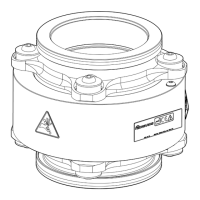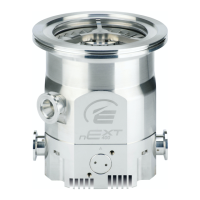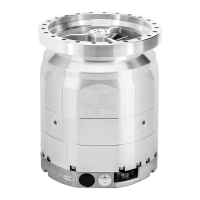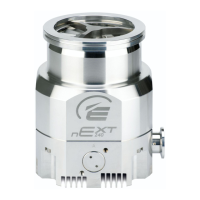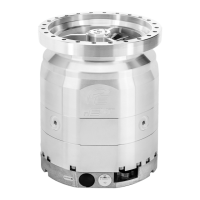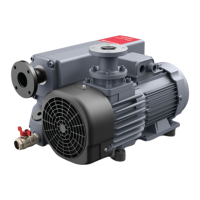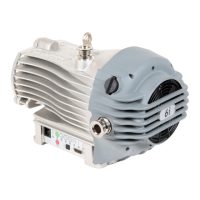In order to become familiar with how to recognise bearing preload aer a service, it is
recommended that the instrucons in Bearing preload familiarisaon on page 10 are
followed.
Bearing preload familiarisaon
CAUTION:
Ensure all tools are clean and free of dirt and grease to avoid contaminaon of the
rotor.
This procedure should be performed with the pump placed in the vercal posion.
1. Place the preload tool onto the inlet of the turbomolecular pump. The force probe
must be located into the centre of the pump inlet with the adjuster legs engaged
onto the magnec bearing adjuster nut Figure 4 on page 10. Supporng the
preload tool body in posion while performing the preload check is recommended.
2. Apply pressure by pushing the test plunger unl a change in preload can be
detected. Releasing the test plunger will return the preload back to its original
posion. Pressing and releasing the test plunger slowly while performing this check
is recommended.
Note:
Detecon of the bearing preload can be recognised by a disnct sound. This may be
accompanied by a sensory feel through the tool and pump body. If a change in preload
cannot be detected, it may be possible to carry on with the service but with cauon.
CAUTION:
If the pump has suered any damage (i.e. the rotor does not spin freely or quietly), it is
recommended that the service is not carried out and that the local service centre is
contacted for advice.
Figure 4
Locang the preload tool (NW40 variant shown)
1. Preload tool force probe
2. Preload tool body
3. Preload test plunger
4. Preload tool adjuster legs
5. Magnec bearing adjuster nut
B8G2-00-840A - Pre-service
Page 10

